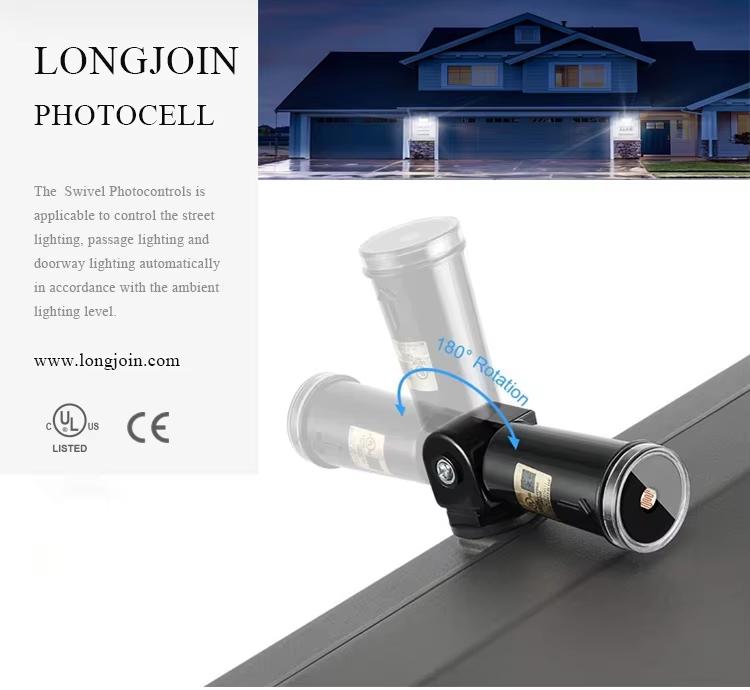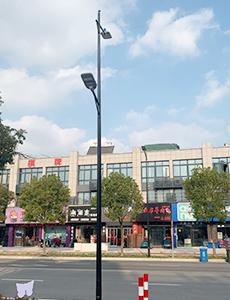Outline
- Introduction
- What Are Zhaga Connectors?
- What Are The Standardisation Advantages of Zhaga Connectors?
- How Zhaga Controllers Make Smart Lighting More Revolutionary?
- Are Shanghai LongJoin Photocells Zhaga Compatible?
- How Can Zhaga Controllers Be Helpful in Promoting Sustainable Social Development?
- Final Words
Cities are getting smarter and streetlights are evolving with them. Gone the time when street lights was just used for illumination. Now lights are part of intelligent and data-driven systems. Thanks to the Internet of Things, outdoor lighting can now respond to occupancy and environmental conditions in real time.
This shift is turning public infrastructure into smart, connected networks. And at the heart of this transformation are Zhaga connectors, making lighting systems easier, smarter, and more connected than ever.

What Are Zhaga Connectors?
Laid out by Zhaga Consortium, these are standard protocols designed to facilitate the integration of photocontrollers and communication modules into LED luminaires. Though their applications are widespread, they are especially common in outdoor applications. They offer various benefits that include:
- Plug-and-play approach
- Easy upgrades and maintenance
- Curbed operational costs
- Less downtimes
The table below outlines the standardised interfaces of Zhaga connectors, as defined in Zhaga Book 18 and related specifications.
| Feature | Description |
| Mechanical Interface | 4-pin, twist-lock connector design; IP66-rated when mated; designed for outdoor use |
| Electrical Interface | 24V DC power supply provided to the photosensor/communication module |
| Communication Protocol | Based on DALI-2 (Digital Addressable Lighting Interface) |
| Control Interface | D4i standard support for bidirectional data exchange (photocells→ controller, controller → nodes) |
| Mounting Position | Top of the luminaire; includes a standardized placement zone for consistent installation |
| Ingress Protection (IP) | IP66 sealed interface when coupled with a compliant module |
| Environmental Resistance | UV-resistant, waterproof, and corrosion-proof materials for outdoor longevity |
| Interoperability | Cross-brand compatibility certified under Zhaga-D4i program |
| Hot-Plug Support | Allows for live swapping of light controllers/communication modules without powering down the luminaire |
| Application Compatibility | Motion sensors, phtocells, wireless communication nodes (e.g., LoRa, NB-IoT, Zigbee) |
What Are The Standardisation Advantages of Zhaga Connectors?

Modular Design: Simplifying Maintenance
Upgrades and replacements are must-considered parameters of any lighting system. However, in traditional lighting systems, they required extensive rewiring or even complete fixture replacement during maintenance.
Zhaga connectors, with their standardised specifications, have introduced a modular approach. Now, lighting components can be easily swapped or upgraded without altering the entire system. This modularity reduces maintenance time and minimises operational disruptions. The lighting components that adhere to Zhaga include:
- Photocells
- LED drivers
- Communication Modules
By facilitating straightforward component replacement, Zhaga connectors enhance the longevity and adaptability of lighting infrastructures.
Global Compatibility: Interoperability Across Manufacturers
A lighting system is made of several components, each of which could be from a different manufacturer. While installing them, compatibility issues can arise. This can lead to increased downtimes and costs. Such disparities further hinder the scalability of lighting systems and complicate maintenance procedures.
Zhaga’s standardised interfaces address this challenge effectively. They ensure that components from across brands follow the same manufacturing guidelines and ultimately can interoperate seamlessly. This has multiple benefits, including:
- Simplified procurement processes
- Reduces dependency on single suppliers
- A competitive market environment
- Versatile and scalable lighting systems tailored to their specific needs.
Plug-and-Play Functionality
Complex installation procedures and wiring configurations increase the risk of errors and prolong deployment times. This leads to increased labour costs and potential safety hazards.
Zhaga connectors provide plug-and-play functionality, enabling rapid and fault-free component installation. Standardised design eliminates the need for special tools or in-depth technical expertise. This ease of installation speeds up deployment and improves safety by curtailing the vulnerability of wiring errors.
How Zhaga Controllers Make Smart Lighting More Revolutionary?
Dynamic Lighting Control

Challenge: Traditional streetlights operate on fixed schedules. This exacerbates power consumption resulting from unnecessary lighting during low-traffic periods. This static approach lacks responsiveness to real-time environmental conditions.
Solution by Zhaga Connectors: They facilitate the integration of advanced photocells and communication modules into LED luminaires. This helps with dynamic lighting control and allows streetlights to adjust brightness based on occupancy and ambient light levels. Such adaptability reduce light pollution, helps with sustainability goals, boost overall safety, and most importantly, reduce operational costs.
Accelerate IoT Adoption
Challenge: IoT integration is the key to making lighting smart. However, previously it was a cumbersome process owing to the required complex installations and compatibility issues. Its consequent effect was the slow adoption of smart technologies in urban environments.
Solution by Zhaga Connectors: Zhaga standardisation offers interfaces that support plug-and-play functionality. This reduces the complexity of integrating IoT devices, including photcells and communication nodes, in existing lighting infrastructures. This means cities are able to deploy and roll out smart lighting solutions faster and at scale, which opens the way for larger smart city programs.
Reduced Total Cost of Ownership
Challenge: There were a lot of technicalities involved with traditional lighting. For that, costly specialised labour was needed. Further compatibility issues sometimes made the replacement of entire fixtures during maintenance necessary. These expenses contribute to a higher total cost of ownership (TCO).
Solution by Zhaga Connectors: They enable modular upgrades and facilitate easy maintenance. Thus, it significantly reduces these costs. Additionally, the improved energy efficiency and extended lifespan of smart lighting systems contribute to further TCO reductions.

Are Shanghai LongJoin Photocells Zhaga Compatible?
Yes! LongJoin, a member of the Zhaga Consortium, has been dedicated to the lighting controller field for over 20 years. Their products are designed to be compliant with international standards. Additionally, LongJoin offers customisation options to meet specific project requirements, providing flexibility in design and functionality. Below is the table detailing LongJoin’s Zhaga-compatible photocontrollers.
| Product Model | Description | Key Features | Compliance & Standards |
| JL-700 Series | Zhaga Book 18 sockets, designed for outdoor LED luminaires | 4-pin twist-lock designIP66 rated when matedSupports DALI-2 communication | Zhaga Book 18 Edition 3, D4i, CE, RoHS |
| JL-700W | Leadless version of the JL-700 socket for compact installations | 12V rated voltageIP66 protectionHot-pluggable capability | Zhaga Book 18, CE, RoHS |
| JL-710 | Zhaga Book 18 socket with integrated AC-DC power supply | Outputs 24VDC/5W, suitable for drivers without auxiliary voltage output | Zhaga Book 18, CE, RoHS |
| JL-712B2 | Intelligent locking controller with combined light and microwave sensors | Outputs 0-10V dimming signalBluetooth mesh communicationApp-based near-field control | Zhaga Book 18, CE, RoHS |
| JL-7XX Series | Range of Zhaga accessories, including extension caps and baseplates | Modular designSupports various mounting positionsCompatible with multiple luminaire designs | Zhaga Book 18, CE, RoHS |
How Can Zhaga Controllers Be Helpful in Promoting Sustainable Social Development?
Zhaga connectors will play a key role in the evolution of smart cities. Their standardized design supports faster deployment of connected lighting. This helps city planners reduce infrastructure complexity. With energy-efficient features, they also contribute to lower carbon emissions.
Their modular nature further allows for easy upgrades without full replacements. This minimizes waste and extends system life. Overall, Zhaga connectors support both technological advancement and environmental goals, making them vital to sustainable urban development.
Final Words
Zhaga connectors are reshaping outdoor lighting with smarter, more sustainable solutions. Their standardization drives real progress in smart city development. For Zhaga-compatible Longjoin photocells, Chi-Swear offers trusted quality and technical support you can count on.






